Health Benefits Engagement
Uncover the next generation product to decrease benefits confusion
and increase cost savings for employers and employees
Challenge
As part of a small new concepts team, research the health benefits landscape, assess opportunities, and share ideas for new product ideas to invest in with leadership. Create user journey maps, wireframes, and presentations to get buy in from the org and the other product teams.
- My Role: Lead Designer
- My Team: 2 Principal Product Managers, 1 Product Analyst
- Client: In-House Role
- Business Goal: Create diversity in existing product portfolio and generate new revenue streams
- Duration: 9 Months+
Qualitative Research: Employees (end users)
I joined the company as a founding member of what would be named the "New Concepts Team". Our goal was to start from scratch on what next generation products could be for the company.
It turned out that the company had done a lot of product research with employers (the paying customer) but not a lot with employees (end users). Seeing this gap, I suggested we interview end users to understand their pain points. It was determined the focus would be on employees with high medical bills due to managing chronic conditons like diabetes, musculoskeletal disorders (catch-all term that covers joint, bone, and muscle conditions), and/or cancer. By focusing on this group of high cost claimants, we hoped to gain insight into ways we could save both employees and their employers money on healthcare.
Myself and a colleague conducted 12 one hour interviews with people with chronic conditions, as well as 4 interviews with "healthy" people as a baseline. After the interviews, we compiled the results. I created an affinity map to find commonalities across interviewees and created user journey maps summarizing the experiences we heard.
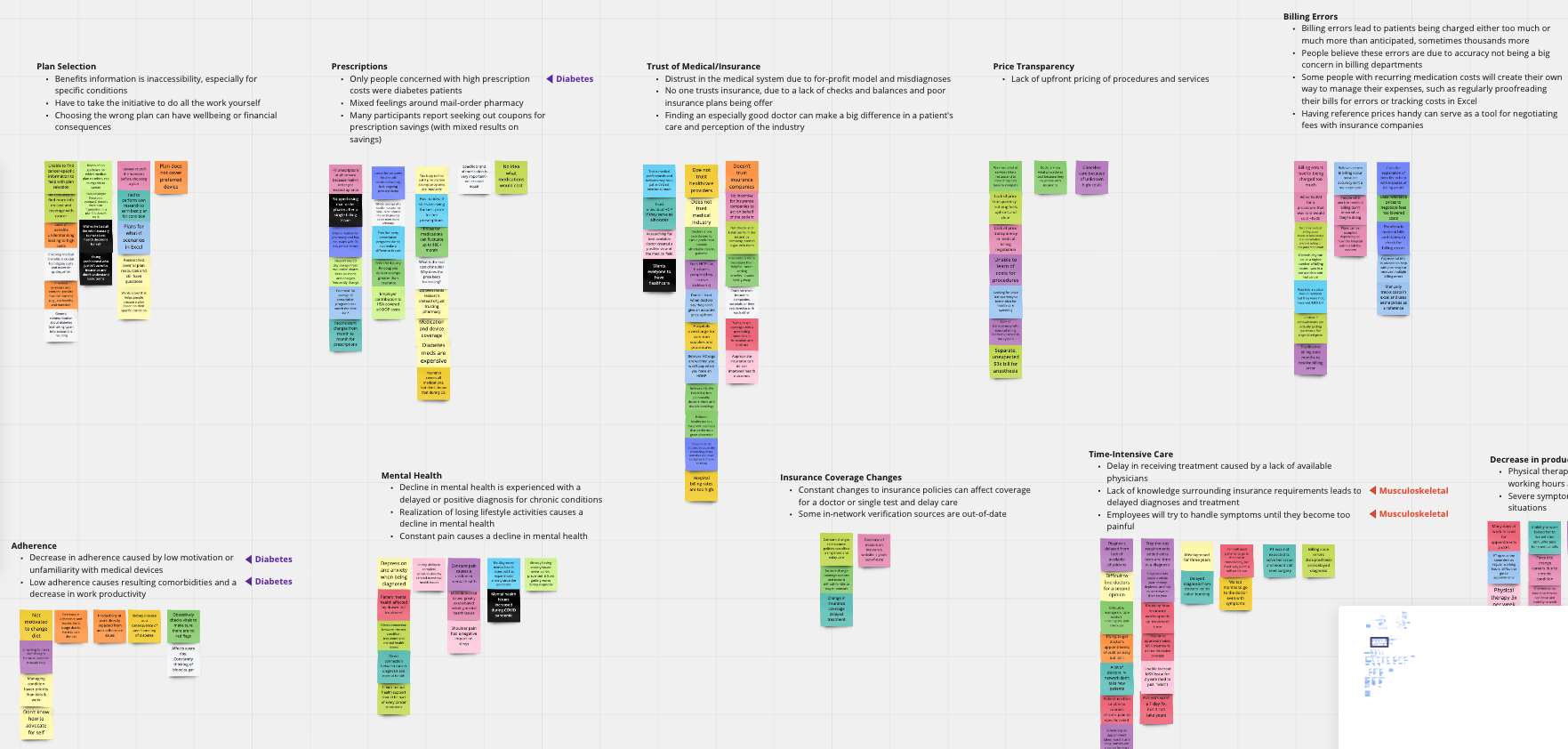

We found the following pain points impacted employees regardless of their specific condition:
- Price transparency - Lack of upfront pricing information for medical services
- Plan selection - Benefits information for coverage of specific conditions is inaccessible
- Treatment Delays - Lack of physician availability makes some employees wait months for a diagnosis
- Treatment Quality - Lack of trust driven by for-profit model and misdiagnoses
- Mental health - Realization of losing lifestyle activities with a diagnosis causes a decline in mental health
As a follow-up, we conducted a survey to validate these findings at scale. Our next task was to create concepts that address these pain points as best we could, while also keeping in mind:
- Employer willingness to pay
- Limitations as imposed by the healthcare industry (such as lack of price transparency in general)
- Limitations around brand permission
Qualitative Research: Employers (our customer)
We worked as a team to come up with concepts to research with employers. The concepts were compiled into a deck. We scheduled time with our own customers, confirming their pain points and presenting possible solutions which we felt they might be willing to buy and would help address the issues we knew our chronic condition interviewees were facing.
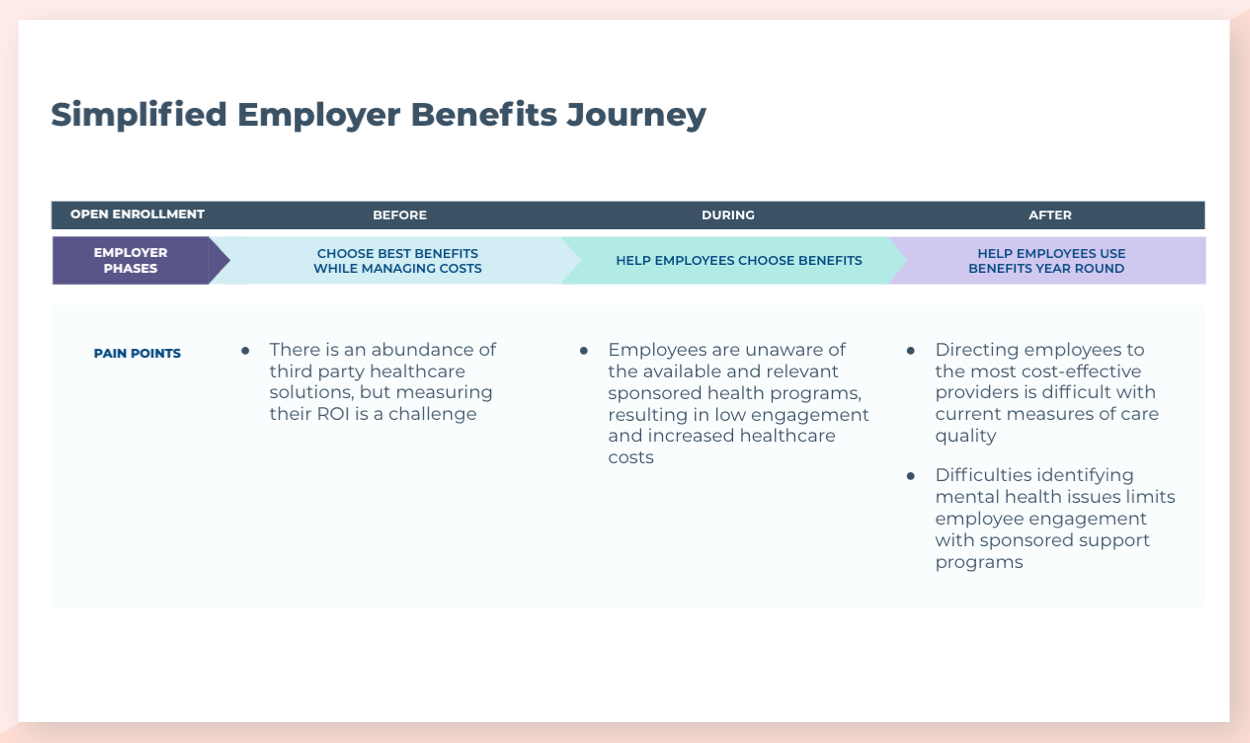
After several rounds, we found a concept that seemed to both resonate with employers and would help chronic care patients. Within the healthcare space, there have been many point solutions in recent years to address specific health concerns, with diabetes, mental health, & maternity care being a few examples. Employers have trouble raising awareness of the programs to employees, and employees could benefit from a program designed specifically for the condition they face.
From these insights, we created a benefits matchmaker concept and moved on to figuring out how to get an MVP built.
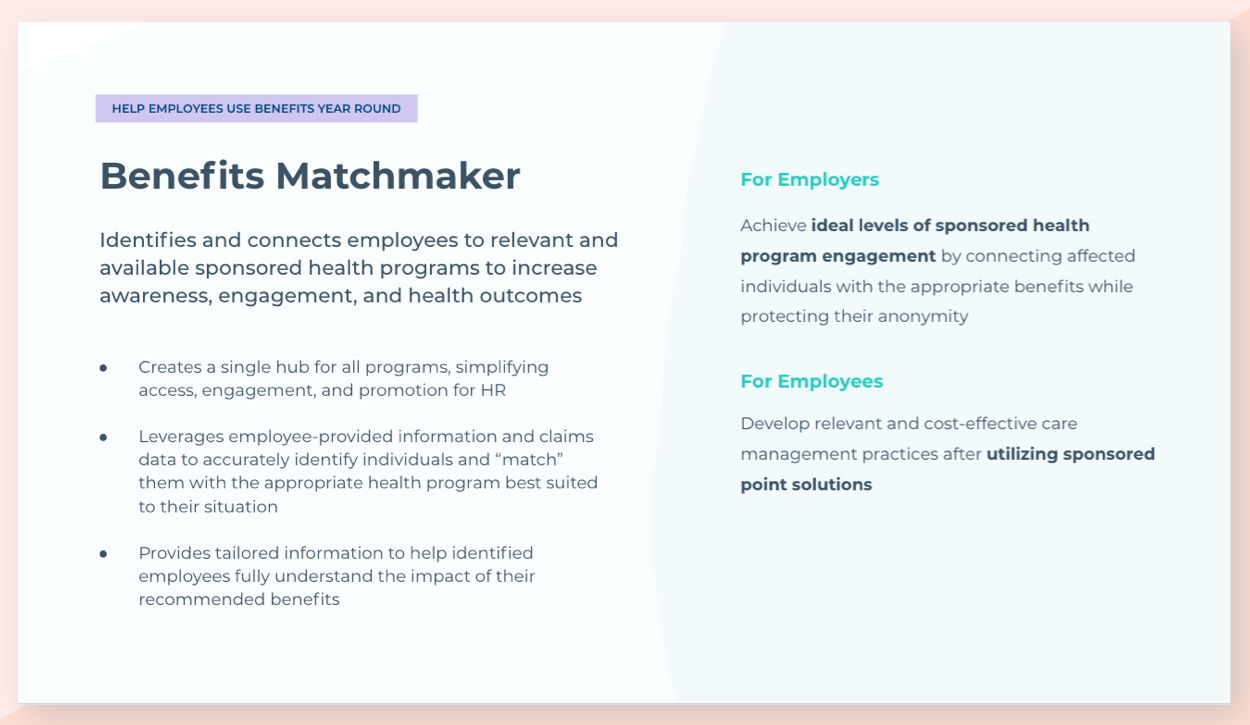
Wireframes: Employee Experience
The team wanted to start envisioning what a year-round benefits platform could look like, one which included an easy way for employees to find the programs best suited for their health needs. I created a few wires to get the conversation started.
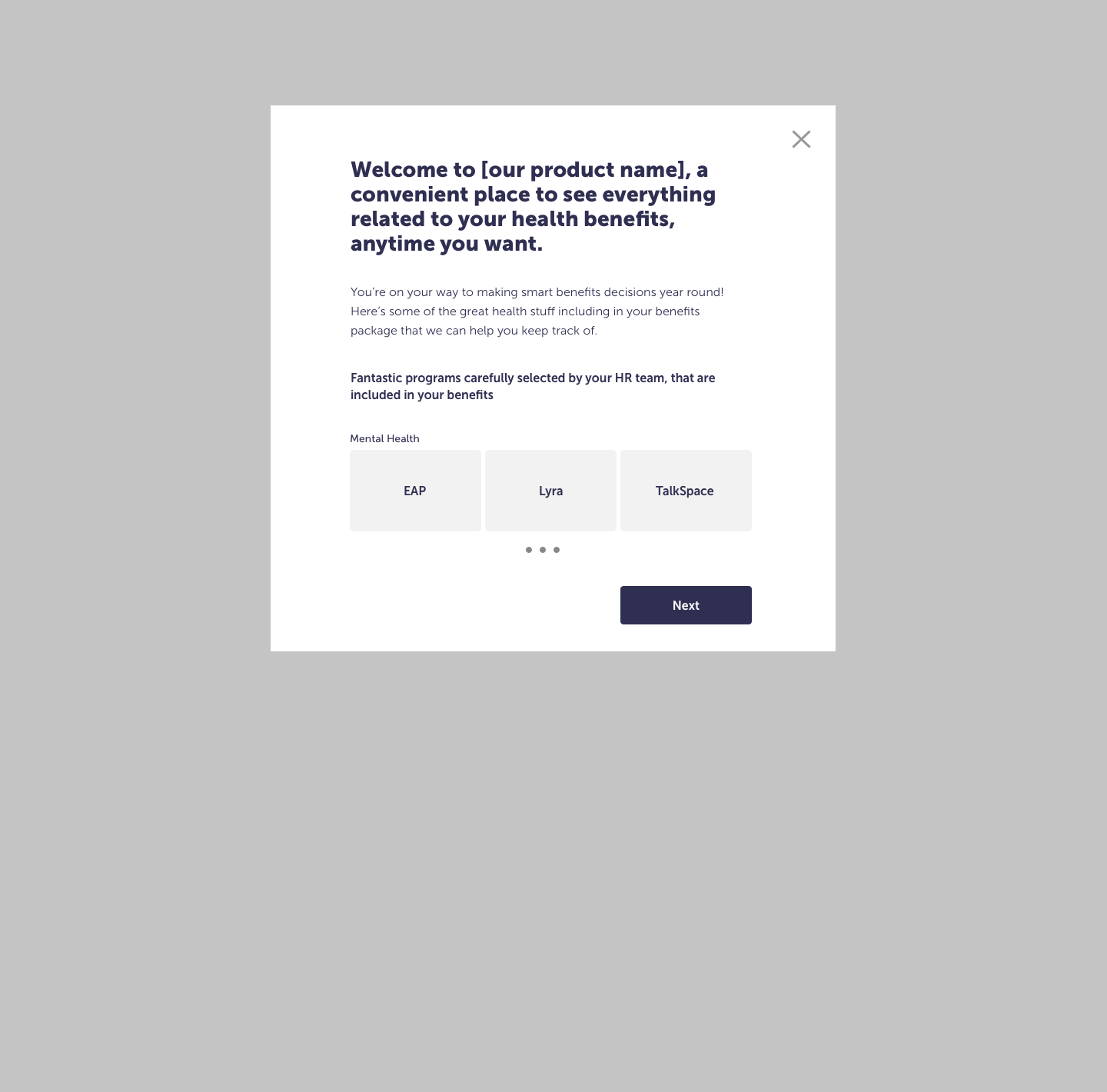
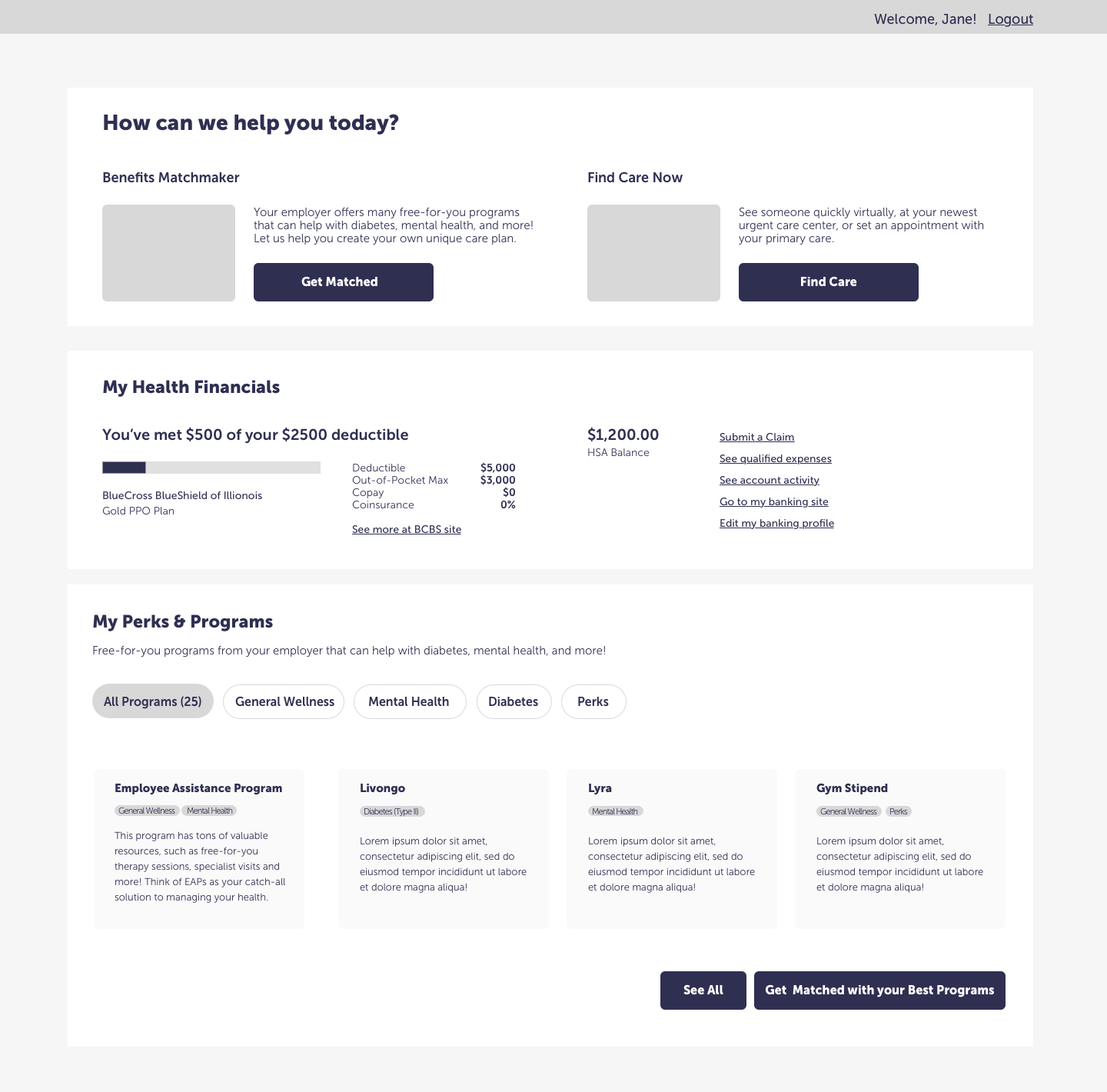
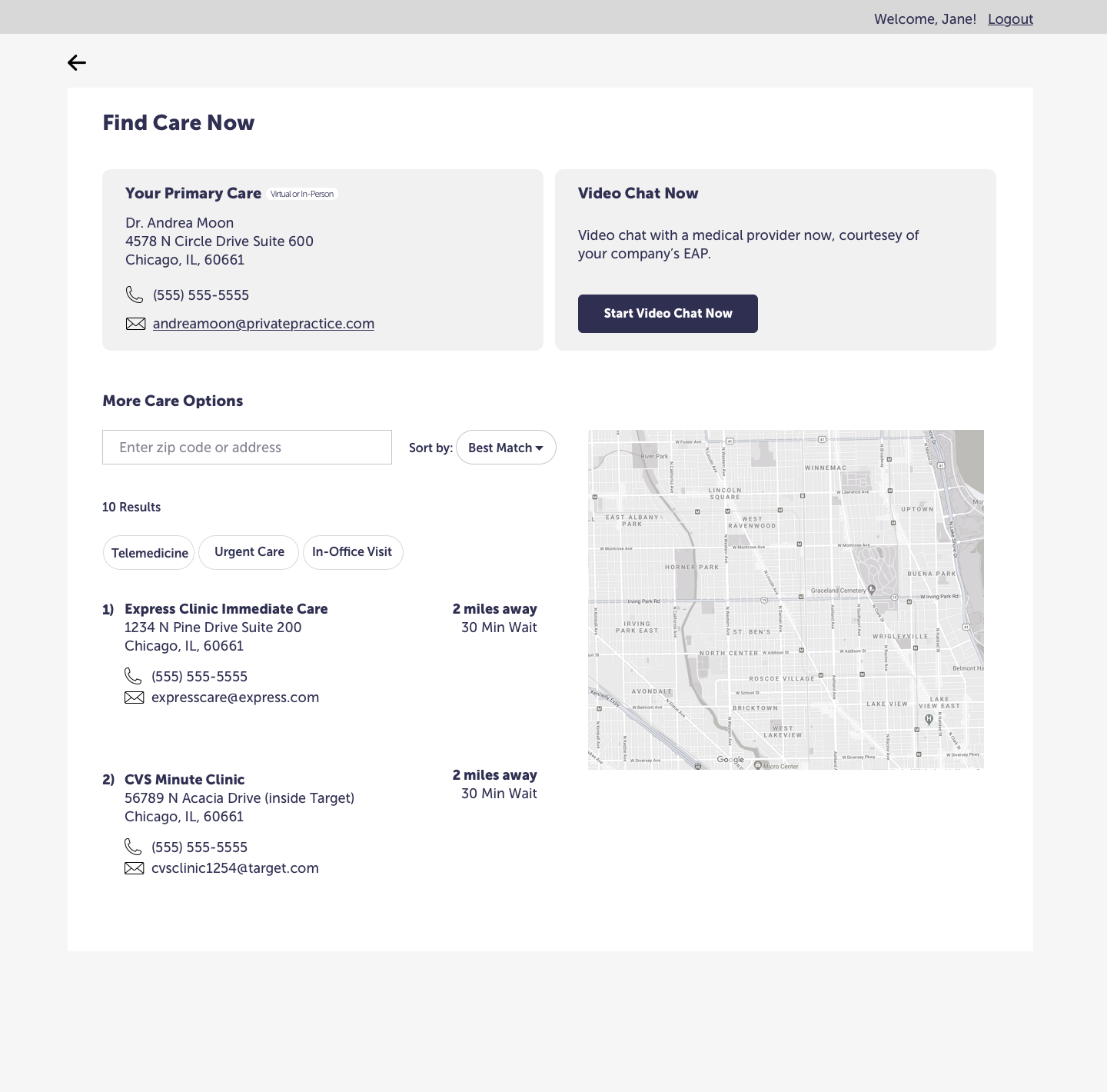
Mock Up: Employer Dashboard
We knew from our employer interviews how important measuring ROI on point solutons was. Interestingly, it had less to do with monetary ROI and more to do with measuring engagement. The idea behind this design was to give employers a view into how and when their employees were finding and signing up for a program and if they ultimately completed it.
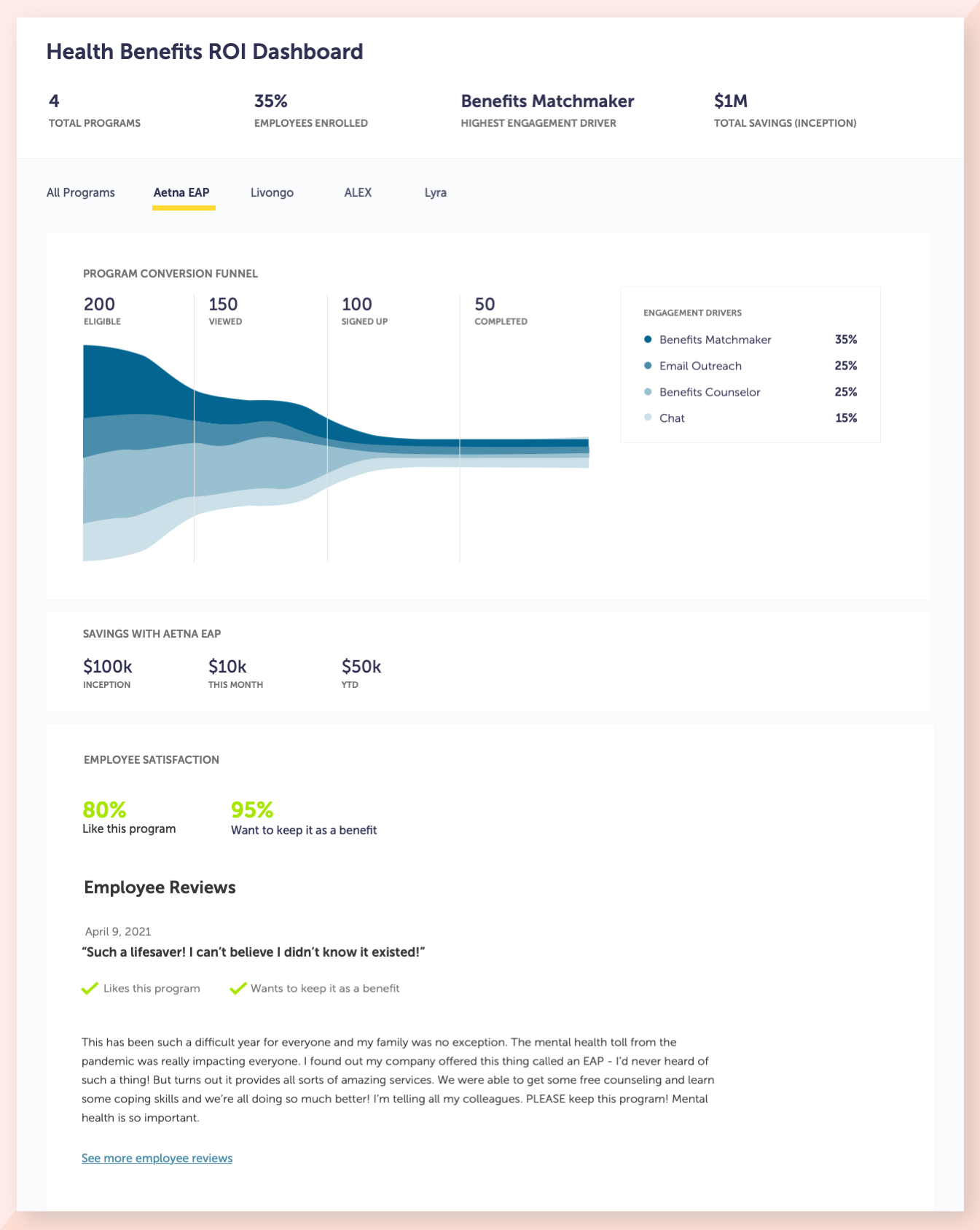
Conclusion
This is an in-progress new product. As of the time of writing, we are exploring various MVP concepts in coordination with other product teams to set the foundation for a standalone year-round engagement platform in the near future.